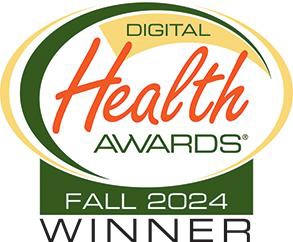By Michael Schug
Edited from a story originally published in 2012
Komen Tissue Bank: The beginnings of this unique resource

Would healthy women selflessly donate breast tissue, giving researchers valuable and precious clues into breast cancer?
It’s a question no one had asked until 2005.
Anna Maria Storniolo, MD, a medical oncologist, was new to Indiana University when she was first approached by Connie Rufenbarger, a two-time breast cancer survivor from northern Indiana. Rufenbarger told the doctor that she wanted to create a breast cancer prevention program at IU. Dr. Storniolo needed some time to think about it, and she told Rufenbarger about all of the roadblocks to expect. “All kidding aside, Connie truly is a force of nature,” Dr. Storniolo said. “I have never met anyone like her. She is truly the most selfless person I have met.” Dr. Storniolo said yes.
Years earlier, Rufenbarger—a former schoolteacher—had taken part in the NCI’s Breast Cancer Progress Review Group (BC-PRG), which in 1998, reported that progress in breast cancer research was hindered by not “understanding the biology and developmental genetics of the normal mammary gland.” Six years later at a 2004 annual meeting of Indiana breast cancer scientists and clinicians, the lack of “normal” specimens once again became the topic of discussion. Rufenbarger, a woman who had been crusading since her own breast cancer diagnosis 22 years earlier, stood up at the meeting and said, “I can’t do the science, but if you need women to give you tissue, done deal.”
The following year, Bryan Schneider, MD, then a fellow in the Division of Hematology Oncology, had designed a study in which he needed DNA from women without breast cancer. Rufenbarger learned of the young Schneider’s need and suggested a blood collection at the 2005 Komen Indianapolis Race for the Cure. The result? They collected an amazing 1,200+ whole blood samples. Equally impressive, the event—dubbed Friends for Life—proved that women would willingly give of themselves in the fight against breast cancer. In order to provide a permanent and secure repository for those samples, Mary Ellen’s Tissue Bank, named in honor of Mary Ellen Allerding, was established.
Rufenbarger approached Susan Clare, MD, PhD, and inquired if she would be willing to share an Oracle-based database she had created. The talented surgeon quickly shared it. “Sue’s database was absolutely a gold mine for us,” Rufenbarger said. All of the right ingredients had been falling into place at the right time for the world’s first healthy breast tissue bank to become a reality.
Other collection events soon were scheduled in which saliva and serum were also obtained in addition to breast tissue and blood. The acquisition, processing, storage, retrieval and dissemination of the specimens were performed according to best practices established by the National Cancer Institute.
In the spring of 2007, Drs. Storniolo and Clare were attending the Translational Breast Cancer Research Consortium in Texas. Delayed by a snowstorm in Milwaukee, Dr. Clare arrived late at the meeting and took the last remaining seat. She happened to be seated next to a patient advocate, Cindy Geoghegan, who was also a contractor for Komen. Geoghegan wondered why the doctors had never contacted Komen before. Dr. Clare explained they had been unable to get a meeting with Komen. Geoghegan next asked Dr. Clare if she and Dr. Storniolo could remain in Texas for an extra day. So, Dr. Clare jotted down a note and passed it over to Dr. Storniolo, who responded that she could not. Dr. Clare re-sent the note, this time referencing the fact that it was for a meeting with Komen. Dr. Storniolo said yes, she’d be there. And Rufenbarger joined them.
The trio met with Hala Moddelmog, then president and CEO of Komen. When asked where the tissue bank’s funding comes from, Dr. Storniolo told Moddelmog, “Well, it’s month-to-month.” What would it take not to be month-to-month, Moddelmog asked. “I think a million dollars a year would do it,” Rufenbarger said. And so it happened. Komen gave $1 million to start the Susan G. Komen for the Cure Tissue Bank at the cancer center, becoming the world’s only healthy breast tissue bank.
The threesome remained calm, cool and collected … until they got inside of an elevator at the Komen headquarters. That’s when they cheered and celebrated their accomplishment, which was likely heard beyond the elevator.
“From the very start, this has been a great idea from an advocate—Connie Rufenbarger—and a lot of hard work from a whole lot of people,” Dr. Storniolo said. “If we can understand what’s going wrong, we can understand how to fix it.”
About the Susan G. Komen Tissue Bank
The Komen Tissue Bank is the only repository in the world for normal breast tissue and matched serum, plasma, and DNA. We are transforming breast cancer research by offering normal, high-quality, richly annotated tissue samples to scientists worldwide.

This Komen Tissue Bank website earned a bronze award in the responsive website design category in the 2024 Digital Health Awards competition.




